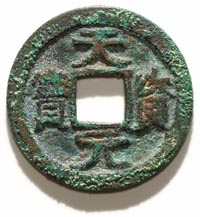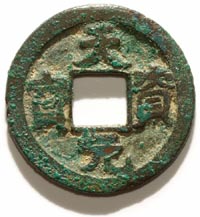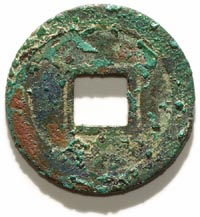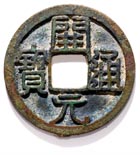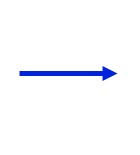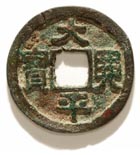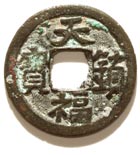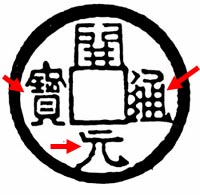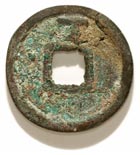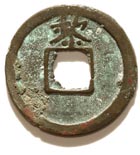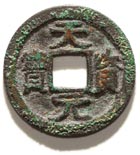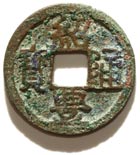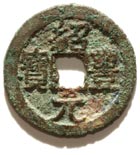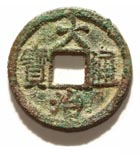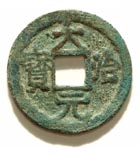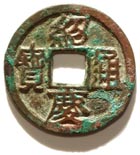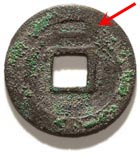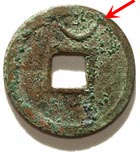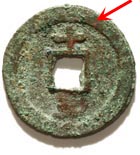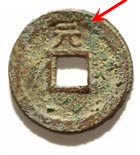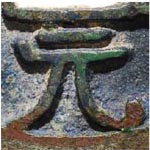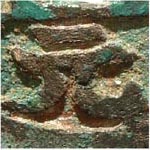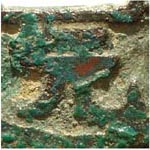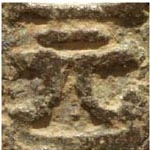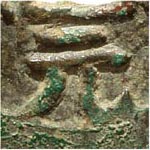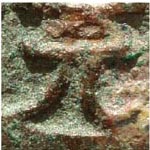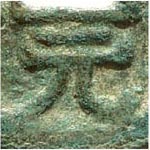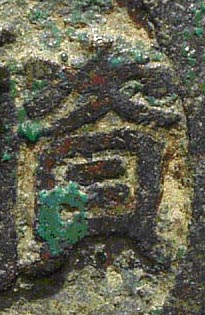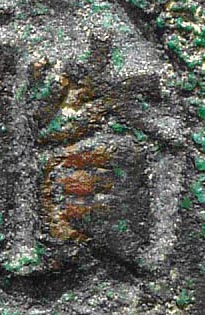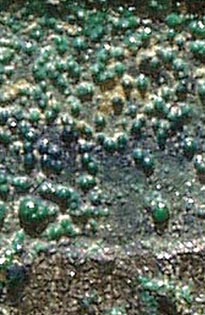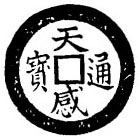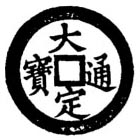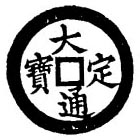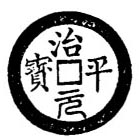| HOME |
Vietnamese Thien Tu and Kai Yuan Style | |
| Thiên Tư Nguyên Bảo 天資元寶 Thư
pháp,
viết
theo phong cách, Trung
Quốc Kai Yuan |
|
Writing styles used on early
Vietnamese coins often had meaning and purpose. Some of this
purpose can be understood from looking at Chinese coins that
may have influenced Vietnamese coins of the time. The
most widely circulated Chinese coin in early times was the Tang Dynasty
Kai
Yuan Tong Pao, whose style can be seen in several Vietnamese coins from
the early Dinh dynasty to the late Tran
dynasty. A coin from the Ly dynasty, Thien Tu Nguyen Bao, is key
to
understanding how and why the Vietnamese used the Kai Yuan style, and
what it symbolized. It appears that the Kai Yuan style also relates to
the use of reverse characters on Vietnamese coins!
Thien Tu Nguyen Bao Thien Tu Nguyen Bao was issued by Emperor Ly Cao Tong in the reign of Thien Tu (1186 - 1201) during the the Ly Dynasty (1010 - 1225). The coin has two calligraphic styles although few coins are known. The first coin below is written in the Chinese Kai Yuan style. The second is more of a Ly dynasty style. The first coin also has the reverse character Nhat, for the number 1.
|
||||||||||||||||||||||||||||||||||
| Kai Yuan Style in
Vietnamese Coins The first coins from the early
Dinh and Anterior Le dynasties had rather irregular calligraphy but
many like examples B and C used a Bao copied from the Chinese Kai Yuan
coin (A). Thien Tu type I (D) uses a Kai Yuan style Bao, has a left
hook Nguyen like the Kai Yuan , and the Thien is also of early Chinese
style. Several coins from the later Tran dynasty also use the Kai Yuan
Style, (E F G H K).
These Kai Yuan style coins include all early Vietnamese coins with characters on the reverse. This is not accidental and must have been a rule. Coins with the character Nhat meaning "one" and Nguyen meaning "beginning" were probably issued in the first year of the reign. The Thieu Phong with reverse "15" marks the 15th and last year of the reign. A reverse moon would have similar meaning. This rule probably derives from the meaning of Kai Yuan, Kai means portal or entrance and Yuan mean new or beginning. The Tang dynasty Kai Yuan is one of the most important Chinese coins ever issued and often used reverse moons and reverse mint mark characters.
|
||||||||||||||||||||||||||||||||||
| The Nguyen Character A comparison of the character Nguyen shows both a pure Vietnamese style and styles related to the Kai Yuan coin.
|
||||||||||||||||||||||||||||||||||
| Authenticity The entire coin is covered with natural green Malachite and blue Azurite. Azurite naturally forms in areas with less oxygen and often appears in the field, particularly in the center of the field. A closeup of the character Tu shows both coins use the same style and no manipulation..
|
||||||||||||||||||||||||||||||||||
| Toda Toda's early work on Vietnamese
coins, http://art-hanoi.com/toda,
was
pioneering
in
the
west
but
it
is
now
130
years
old
and
some
of
its
information is now known to be inaccurate. Many diminutive coins that
Toda assigned to early emperors are now known to be later private mint
coins. Other coins are reported with the four characters in a different
order from known examples. Toda's images are all hand drawings and many
use a single general purpose style that could not be on all the
different coins.
However, Toda does report a
Thien Tu coin for the Ly dynasty, however it is Thien Tu Thong Bao,
which is doubtful as all Ly dynasty coins use the characters Nguyen
Bao.
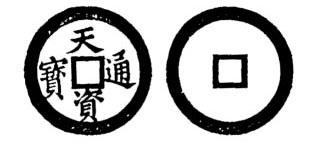 Several of Toda images of the
Ly dynasty, http://art-hanoi.com/toda/12.html,
use
the
same
general
purpose
writing
style
and
some
have
the
characters
in
the
wrong
order
or use the character Thong in place of Nguyen, such
as Thien Cam Thong Bao,
which
should
read
Thien
Cam
Ngyuen
Bao.
Many of Toda's images of rarer coins use the same general purpose writing style. I have read somewhere that some of Toda's drawings were made by his wife, although I don't know if this is true. I do know that many of the rubbings in my book were made by my wife. R. Allan Barker The Historical Cash Coins of Vietnam, http://vietnam.sudokuone.com |
||||||||||||||||||||||||||||||||||
|
The
|
